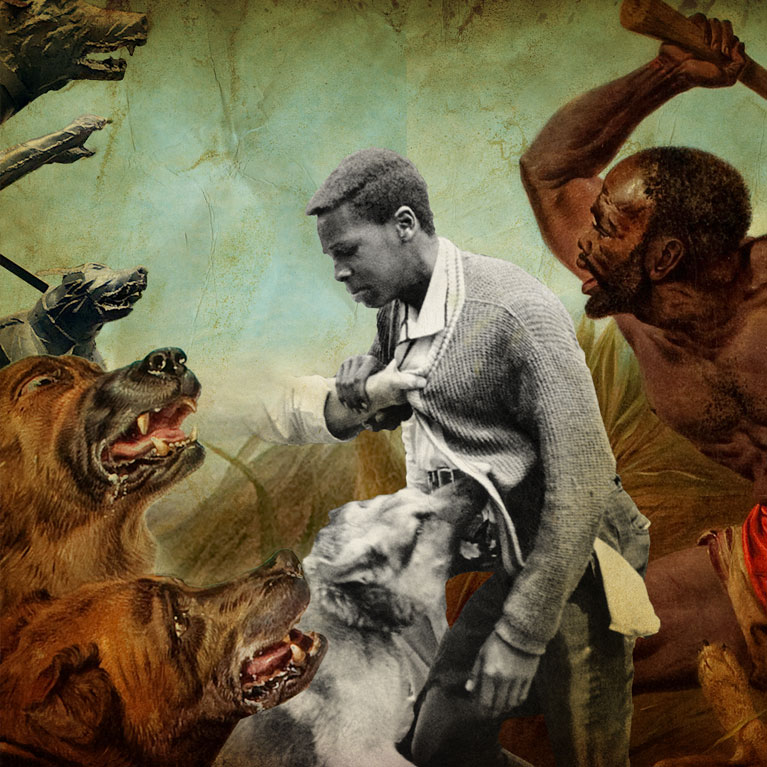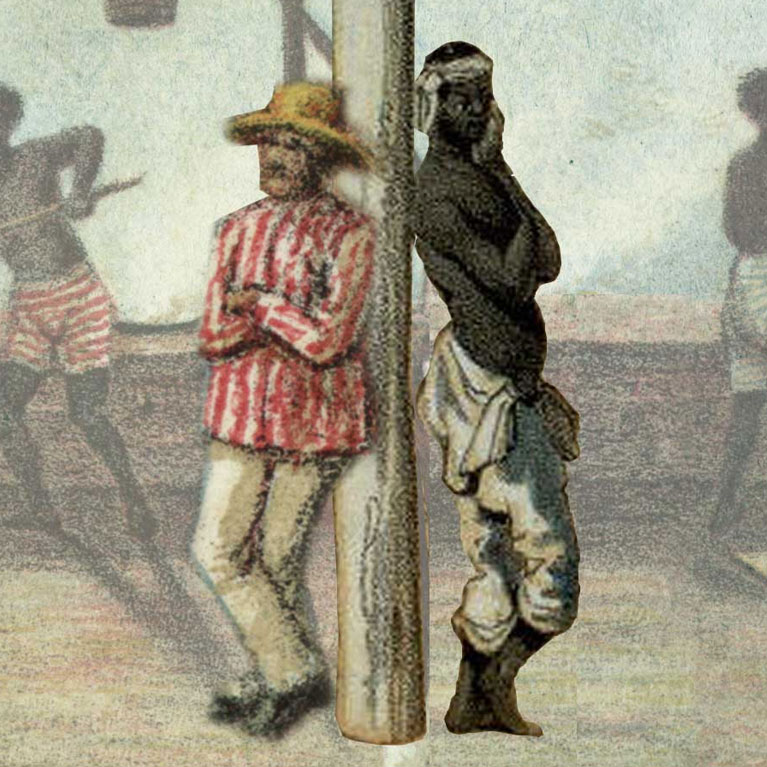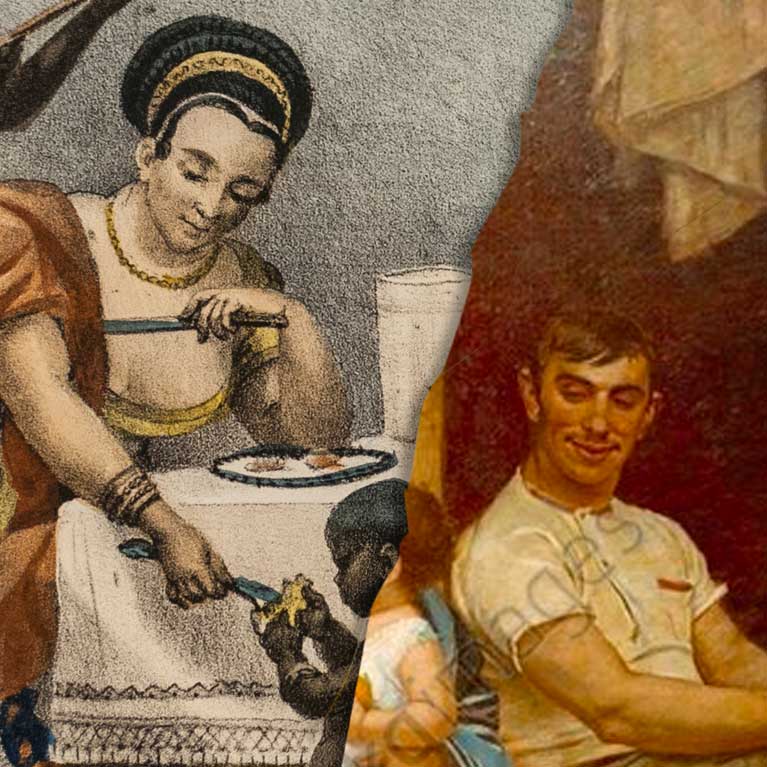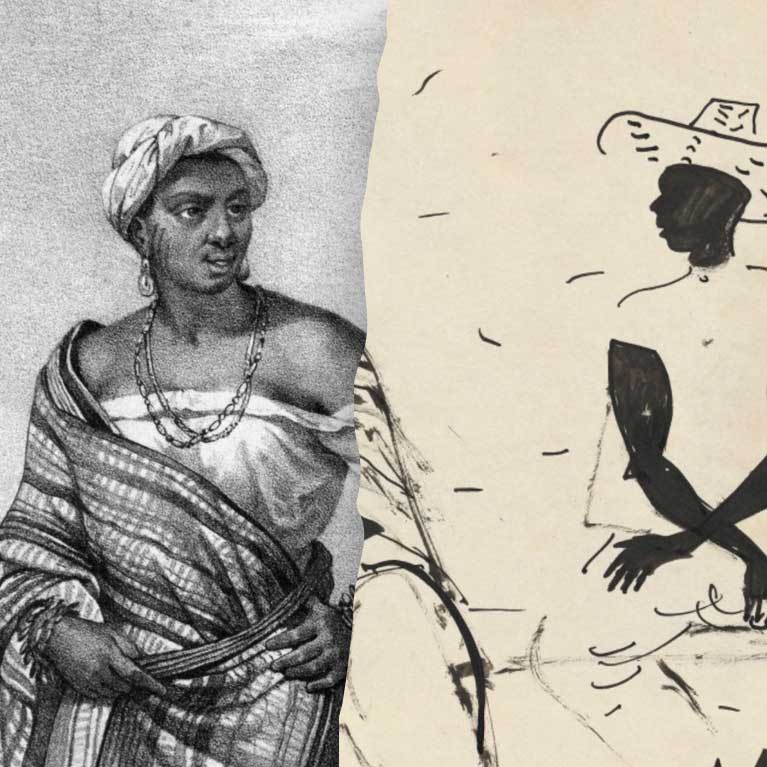Palimpsests
Visual Idioms of Enslavement in the Nineteenth Century
and Their Afterlives

Violence and Injury
Dogs
Mammies
Pity
Furor Sexualis

Labor
Proximity
Upkeep
Idleness

Spaces
Landscapes
Dwellings
Markets

Kinships and Intimacies
Effacements
Homeliness
Genealogies

Self-fashioning and Refashioning
Sartorial Practices
Bundles
This exhibit is best viewed on a desktop or laptop computer.
Curatorial statement
Agnes Lugo-Ortiz
and
Isabela Fraga
From the Latin palimpsestus and the Greek palímpsēsto, the word palimpsest in its original sense referred to a piece of parchment, usually made of animal skin, or to a tablet coated with wax. Their surfaces were repeatedly scraped to remove initial inscriptions so they could be reused. In antiquity, smoothing those surfaces might not have erased all previous marks, but over time, the term came to connote the failure of the attempts. Palimpsest, thus, conveys the notion that underneath what now exists, remain the traces of what once was, susceptible to resurgence—when artificial superimpositions fade—or to retrieval through deliberate excavation.
Organized around the notion of palimpsest, this collaborative digital exhibition unearths various modes in which nineteenth-century visual idioms of enslavement endure in present-day constructions of Blackness—as sites of policing, discipline, labor, desire, love, death, and/or pity, as well as the challenging responses to that legacy offered by contemporary artists across the Americas. Far from an organic metaphor of origin, influence, or filiation, this palimpsestic excavation brings to the surface the many layers that, through time, have anchored and sedimented certain modes of envisioning Black existence, calling attention to their historically dissimilar moments of articulation and their continued resignifications.
The restructuring of plantation economies in the context of industrial and liberal capitalist development, which took place across the slaveholding Americas during the nineteenth century, were organically related to profound shifts in the order of knowledge. These included a visual dimension that registered, for instance, in the newly minted disciplines of biology and anthropology, which were so central to the development of scientific racism and to its obsession with visualizing the Black body. Alongside emerged refined techniques of policing and surveillance, soon to be codified under the novel “science” of criminology, and its formulation of Blackness as lawlessness.
The palimpsests constructed for this digital exhibition take some of these shifts as primordial scenarios, foregrounding the visual idioms that helped structure them. They highlight the violence and injury inflicted by policing, sexualization, poverty, and commodification; the emergence and continuation of the master-slave dialectic in racialized regimens of wage-labor; the construction and subversion of the plantation as a carcelary space; the co-constitution of whiteness through the construction of degrading views of Blackness; the questions of kinships and intimacy, perverted by slavery, but so fundamental for the sustenance of the subjected; and the modes through which, at every turn, life was creatively affirmed through the self-fashioning of the enslaved with whatever materials available.
Read the full curatorial statement here.
Contemporary Art Contestations

